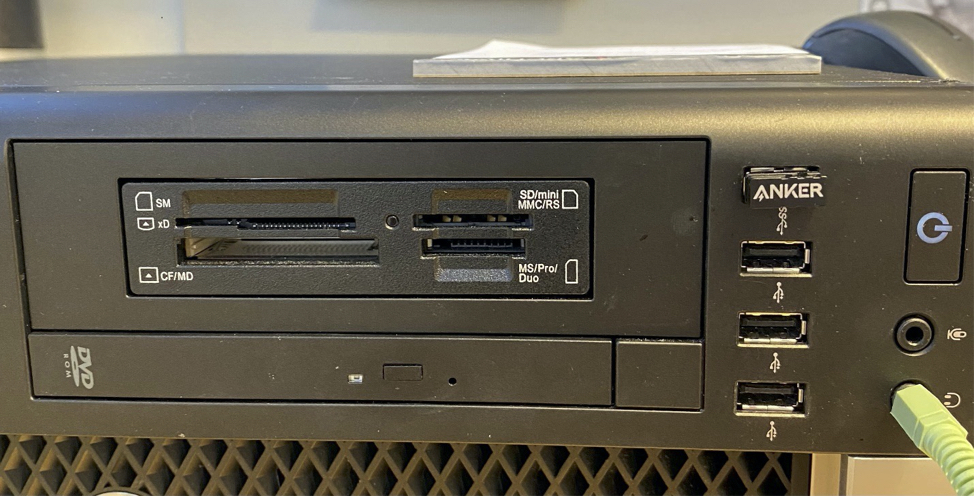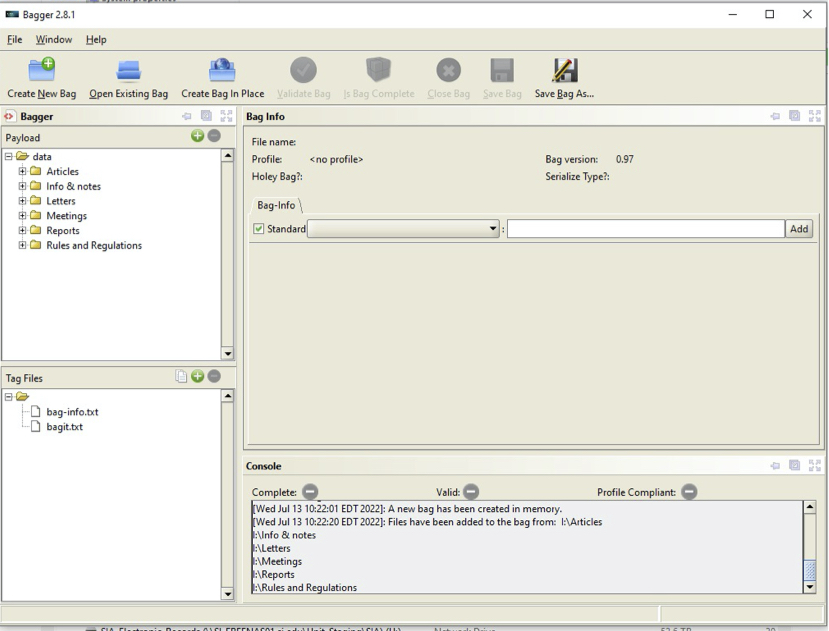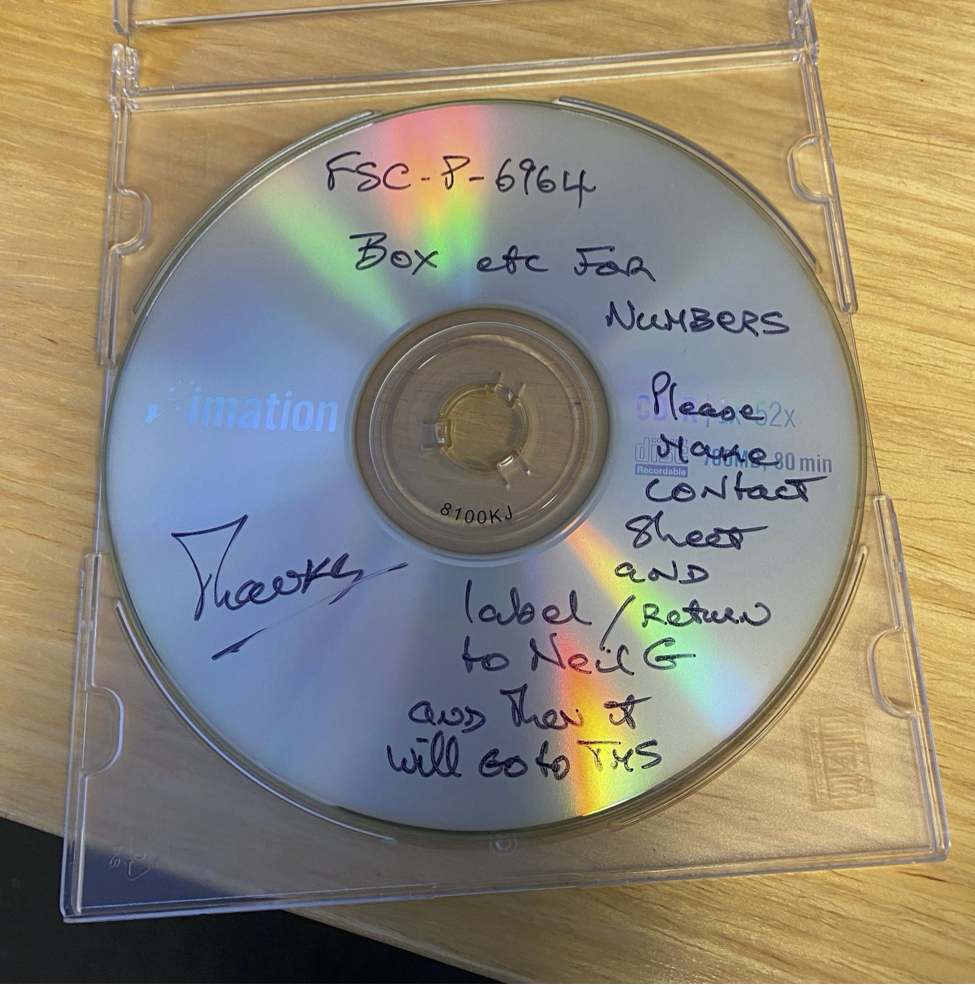Since March 2020 I have been very fortunate to be able to access my physical workstation remotely to work on our various digital collections at the Archives. Work for our team included everything from web and social media archiving to email collection processing to reviewing digital images we plan on sharing on our website soon. Some of the digital records we collect are acquired from network or cloud transfers that can be done securely from anywhere these days. One thing we couldn’t do from home though was process collections that contain removable media like CDs and DVDs. But we still have collections with removable media that contain files that need to be copied to our repository server.

Getting back to the physical office means a return to working with these other collections that have digital assets that need to be copied to our repository server. Along with the CDs and DVDs, we also receive USB drives, hard drives, and yes, even floppy disks. Physical archival collections don’t go home with archivists (or anyone else). Nor do we have equipment at our homes to work with removable media that today’s average home computer can no longer access.
My first day back to the physical archives had me wondering if I would remember how to process a collection. Is it like riding a bike? Kind of, and there weren’t too many bumps. It was comforting to go to the Archives’ collections area to retrieve the boxes for processing that had various CDs, DVDs, and an SD card.

That first day went well, as I revisited our workflows dating back to pre-pandemic times. Processes include inspecting the media for issues (adhesive labels bubbling on a CD for instance), running a virus scan, recording information written on the media in our collection management system (CMS), using software to create the file packages for transfer, running special scripts to determine the formats of the files, and creating and updating processing notes about progress and issues.

As I set about copying the files to our server, I was thrilled the CD/DVD player and the USB-connected floppy drive were still operating correctly. As I have written before, time is not a friend to digital files on physical media. There also were no issues that we sometimes encounter when a CD can’t be read or a file is corrupted.
The second day the work seemed to go a bit slower with the files copying over. Or was I just being impatient? Perhaps it was a bit of both while adjusting to this new normal.
This summer also is a time to reacquaint ourselves with other equipment at the office. I didn’t use the Ripstation, which is a machine for copying (or ripping) dozens or hundreds of CD/DVDs with some automation steps, but I did make sure it powered on though. There also is a workstation with an external hard drive attached that was part of another archival project. It has been on prior to March 2020 and is still functioning nicely. I didn’t want to turn it off at this point (don’t worry, it contains working copies and not the original digital files) since we will continue to work with it.
So far it has been a good start to easing back into the return to the physical workplace.
Further Reading
- Finding Our Way Ahead by William Bennett and Kira Sobers, The Bigger Picture
- What It Takes to Reopen a Reading Room During a Pandemic by Tad Bennicoff and Deborah Shapiro, The Bigger Picture
- Born Digital Reboot: Workflows by Brian Dietz, NC State University Libraries
Produced by the Smithsonian Institution Archives. For copyright questions, please see the Terms of Use.

Leave a Comment